Trump Administration Delays Bumblebee Protections


On inauguration day, President Donald Trump signed an executive order implementing a federal regulatory freeze. Among other things, the order delays adding the rusty patched bumblebee to the endangered species list.
In early January, the U.S. Fish and Wildlife Service announced that it would list the rusty patched bumblebee as endangered. But that will now be delayed from Feb. 10 to March 21, according to the federal agency’s website. Xerces Society, the organization that filed a petition back in 2013 with the FWS to have the bumblebee species listed as endangered, is hopeful that the delay is “just that, a delay,” it stated in a press release.
But the Natural Resource Defense Council (NRDC) is more concerned. “The Trump administration has put the rusty patched bumblebee back on the path to extinction,” Rebecca Riley, senior attorney for the NRDC, said in a statement. “This bee is one of the most critically endangered species in the country and we can save it – but not if the White House stands in the way.”
Bumblebees are key pollinators, and they are necessary to propagate certain crops such as blueberries and tomatoes as well as for native flowering plants. Native pollinators like bumblebees create an estimated $9 billion a year economic value in the U.S. alone.
The rusty patched bumblebee badly needs protection
The rusty patched bumblebee is in desperate need of endangered species protection, as the FWS’ own rule shows. Before the mid to late 1990s, the bees were “widely distributed” in 31 states and Canadian provinces. Since 2000, they have been reported in only 14 states and provinces -- and their populations fell by 88 percent.An FWS analysis found that the “resiliency, representation and redundancy” of the rusty patched bumblebee have declined since the late 1990s and will continue to decline during the next several decades.
Many populations of the rusty patched bumblebee have not been “reconfirmed since the early 2000s,” according to the FWS, and they may no longer “persist.” In addition to the population decline, there is a decline in the range of the bee’s habitat. Since 2000, the bees lost 87 percent of “spatial extent” within their historical range. And such the losses make the bee “vulnerable to extinction.”
Several factors are contributing to the decline of the rusty patched bumblebee. One is pesticides, namely a class of insecticides called neonicotinoids used to target pests that affect agricultural crops, forests, turf and gardens. According to the FWS, these insecticides have been “strongly implicated” in the overall decline of bees and “specifically” for the rusty patched bumblebees. Neonicotinoids have been widely used in the U.S. since the early 1990s, and the use of these pesticides is predicted to increase.
Habitat loss and degradation is another cause of the decline of the rusty patched bumblebee, as is climate change. The bees historically occupied the native grasslands of the upper Midwest and Northeast, but much of those fields have been lost or are fragmented. The estimates of native grassland losses since the European settlement of North America are as high as 99.9 percent. Habitat loss may continue to contribute to the decline of the bees.
Certain impacts of climate change can also affect the bees, including increased drought, flooding and storm events, higher temperatures, more rain, early snow melt, and late frost.
Will we soon put these bees under official protection? Only time will tell.
Image credit: Flickr/Matt Clark
Climate Change is Threatening Britain's Historic Landmarks, Study Finds


Some Republican politicians aren’t sure whether human activity is the reason for climate change. However, a new study by an Australian climate change expert finds that humans are causing changes to the climate 170 times faster than natural phenomena. And the changes caused by all of the greenhouse gases pumped into the atmosphere are threatening historical and tourist sites around the world, including in Britain.
Over the past decade, a dozen significant sites around Britain -- including landscapes and historic buildings -- have been damaged by severe flooding caused by warmer and wetter weather, according to a report released last week by Leeds University and the Climate Coalition.
Titled “Weather Warning,” the report contains 12 case studies that show how some of Britain’s favorite places are being affected by climate change.
Some face more damage from climate change than others. Birling Gap in East Sussex, England (above), part of the Seven Sisters chalk cliffs, is one of the hardest hit.
The Birling Gap sees 250,000 visitors a year. But over time, the chalk deposits in the area have “seen steady levels of erosion,” the report states, due to the coastline’s geology. The cliffs lost about 67 centimeters a year over the last 50 years, experts determined using monitoring data. And the erosion at Birling Gap has accelerated in recent years.
During the winter storms in 2013 and 2014, the equivalent of seven years of erosion occurred in only two months. The report attributes the increased and accelerated erosion to “a combination of climate change and an increase in the regularity of storm events during this period.”
After the storms in 2013 and 2014, the National Trust -- the owner of the land -- found the visitor center, sun lounge area and ice cream parlor only five meters from the cliff edge. So, they had to take them all down. The Birling Gap Hotel may start to topple off the edge of the cliff in 40 years, based on estimates using the current erosion rate. It is projected that the land underneath the hotel could vanish in 93 years.
Birling Gap is one of the National Trust’s “coastal hotspots” that is at risk due to climate change. And the Trust is having to adapt the site to mitigate these risks. It is doing so by putting in ‘elephants feet’ fencing that can be moved backward as the cliff continues to erode to help manage the danger of falling fences. Steps down to the beach have been added, and the horizontal gangway leading to the steps not only allows visitors to have scenic views, but can also be extended. The whole structure can be moved and repositioned as the cliffs erode. There is a longer term plan to move the infrastructure on the site to somewhere that is less at risk of erosion.
Other at-risk places highlighted in the report include William Wordsworth’s childhood home, a historic pub, a church and a cricket club.
These risks show that tackling climate change is urgent. And some businesses and countries are doing what they can, as the report mentions. One of them is Lord’s Cricket Ground, which is the first national sporting venue in Britain to run on 100 percent renewable energy, including solar photovoltaic panels. Across the English Channel, all electric trains in the Netherlands run on wind as of Jan. 1.
What these examples remind us is that although the current American president may pull the U.S. out of the Paris climate agreement, that will not stop other countries and businesses from doing what they can to tackle the most important issue of our day. And when treasured places begin to change forever due to our warming climate, the political will to mitigate the risk will only increase.
Image credit: Flickr/David D'Amico
Should the UK private sector align its strategies with the UN's Sustainable Development Goals?


San Diego and Tijuana Share Uncertainty About Border Crackdown


Stereotypical media images of the U.S./Mexico border typically show barren open areas, dilapidated housing, vigilantes trying to catch people illegally crossing into the U.S., or fenced stretches watched by U.S. Border Patrol agents. They rarely show images of two modern border cities, San Diego and Tijuana, the heart of the Cali-Baja Region (California/Baja California).
What do the recent executive orders issued by U.S. President Donald Trump mean to these two cities? How will building a border wall, increasing enforcement at the border and deporting more undocumented individuals impact the region?
The North American Research Partnership (NARP) is a nonprofit think-tank that researches how the United States, Mexico and Canada can better position themselves for success in the 21st century.
“In general, the vibrant, dynamic and closely intertwined economies of Southern California and Northern Baja California are not affected directly by the executive orders,” said NARP’s portfolio manager, D. Rick Van Schoik. “But the fear and uncertainty about what is next is unsettling to any business expansion efforts. In other words, the economy of both has stalled as jobs on one side so depend upon expansion on the other side.”
With a combined population of more than 6 million people evenly distributed on both sides of the border, San Diego and Tijuana have developed together over the decades, supporting each other economically and culturally. Both have growing economies, fine restaurants, quality cultural amenities and sandy beaches on the Pacific Ocean. Both are located at the furthest point from their national capitals, mostly out of the minds of national leaders, often looking more toward each other than to Mexico City or Washington, D.C.
Two mayors vow to continue cross-border collaboration
San Diego Mayor Kevin Faulconer believes his city’s proximity to the border is one of its greatest strengths, which he addressed in his Jan. 12 State of the City speech.
“When some people look at the U.S.-Mexico border, they see division. But here in San Diego we view it much differently,” he said.“Rather than allowing the border to divide us, we’re building bridges that connect us. We share so much in common. A cross-border culture. A cross-border economy. And a cross-border spirit of cooperation that has my complete and unwavering support!”
Recently elected Tijuana Mayor Juan Manuel Gastelum shares Faulconer’s view. “When jobs are created in Tijuana, jobs are created in San Diego and vice versa,” he said at a joint press conference with Mayor Faulconer on Feb. 6. “We have made a lot of progress over the years, but we know there is more work to do. We want to keep the momentum going, and to do that we must keep the relationship strong in light of some of the things that have been said outside of our cities.”
Paola Ávila, the vice president for international business affairs at the San Diego Regional Chamber of Commerce, agrees. “Our region is a national model for cross-border commerce. Home to the busiest land port of entry, our Cali-Baja region has a thriving $230 billion economy thanks to trade agreements like NAFTA, a talented workforce, and strong binational cooperation.
"San Diego and Baja are powerful partners in business with intertwined economies that are strengthened by a commitment to collaboration. At the Chamber, we stand by the belief that we aren’t just trading with Mexico, but we are producing together.”
50 million people legally cross into the U.S. at San Diego each year
According to data compiled by the U.S. Bureau of Transportation Statistics, more than 50 million people legally crossed into San Diego in 2015, the last full year tallied. An equal number crossed in the other direction. These crossers work, shop, visit family, conduct business or just enjoy the amenities of the other country.
Some small business owners with the San Diego Main Street Alliance are concerned about the executive orders and their effect on foot traffic. The Alliance is a chapter of a national network of small business coalitions working to build a new voice for small businesses on important public policy issues, and the group is speaking out against the executive orders.
Francisco Garcia, the owner of Modern Architecture Services in San Diego, has been in business for a decade. “I see the contributions of fellow immigrants, documented and undocumented, on our local communities,” he said. “Advancing policy that locks them out of our economy will be a disaster for our country.”
Another alliance member, Osvaldo Blackaller, owner of Cueva Bar in the city's Parkcrest neighborhood, says his business depends upon both economic and cultural ties that President Trump’s executive orders may sever. “My restaurant’s success has been possible through the merging of cultures, the blending of foods and a team from all over the world,” he said. “I cook to bring people together.”
Andy Carey, the executive director of the U.S. Mexico Border Philanthropy Partnership, says the region is already seeing diminished retail sales and business opportunities.
“People’s time is worth gold when considering the effort involved in traveling to the other side. If you are going to lose too much time, you will reevaluate the need to take the trip," he explained. "We are already seeing boycotts from Mexico to shop and dine in the U.S. Unfortunately, the boycotts are misplaced and hurt the dialogue more than help it.”
Carey’s bi-national nonprofit is a network of organizations that builds prosperity through leadership, collaboration and philanthropy in the U.S.-Mexico Border region.
“We are inextricably linked by a common desire to improve the quality of life for our people and local communities,” he said. “We share significant human and natural resources, and are much stronger as a region when we cooperate and collaborate with one another.”
David Mayagoitia is the chair of the Tijuana Economic Development Corp. An executive whose personal and business lives straddle the border, he takes a measured view of the executive orders and does not see any impacts yet, although he says U.S. Customs and Border Protection (CBP) has begun to inspect cars leaving the U.S., causing longer waiting times into Mexico.
Mayagoitia believes the orders might impact daily crossing times for executives if there are increased inspections and more questioning by CBP officers, but he doesn’t think it will impact the companies wishing to locate in the region. “This is a minor counterbalance to the economic benefit to companies wishing to relocate to this region by a long shot,” he said.
Will retail sales on both sides of the border suffer? “I suspect some,” Mayagoitia said. "It’s hard to quantify as there are no formal numbers available.”
He told us the impact will mostly center around crossing times. “As they increase, Mexicans who shop in the San Diego region will tend to not come across, so daily impulse shopping will be reduced; likewise in the other direction," he explained. "Also, [the number of] people who reside in Tijuana and work in San Diego or those who live in San Diego and work in Tijuana will reduce crossing as times increase. This will diminish shopping on both sides by each group.”
Companies want to know what's next
Flavio Olivieri is an economic development professional specializing in the U.S.-Mexico border region. He says stricter security measures will have minimal impact on companies establishing manufacturing in Baja, although there might be more delays in merchandise crossing the border -- reducing productivity and competitiveness.
“The more immediate impact is the fear of what’s next," he explained. "Companies have frozen their expansion plans or canceled all together. The uncertainty of what will happen with NAFTA and the costs of Mexican imports into the U.S. has already had a direct impact on investment and creation of jobs.”
Olivieri is also concerned about the impacts of mass deportations. “They might have a social impact in the border cities, but they will impact more directly the U.S. economy, as those people are productive right now, and when they get displaced, it takes them a long time to become productive again. Their families will not have the income to continue spending in the U.S.”
Carey from Border Philanthropy Partnership says the security measures are less worrisome than the truth and realities of the U.S.-Mexico relationship.
“The dialogue has been diminished to sound bites communicating myths and false perceptions about the binational border," Carey said. "The rhetoric includes falsehoods about large numbers of undocumented people crossing the border without approval. In San Diego-Tijuana, this is not the case."
"We already have a double- and triple-fence barrier and significant wait times to move people and goods back and forth across the border. These wait times impede people’s ability to get to work, spend time with family, and enjoy daily and routine activities such as shopping, dining, attending religious services and engaging in tourist activities. All of this speaks to the quality-of-life issues that companies look for when setting up their operations.
"All companies want their employees’ and their families to have a high quality of life. We have that today in the binational region, but increased enforcement, increased barriers and border wait times will actually do more to diminish our quality of life rather than enhance it."
Carey says we need an informed national conversation about the realities of the U.S.-Mexico relationship. Olivieri adds that it's all about complementary capabilities, infrastructure and resources -- and finding the most cost-effective way of producing something, distributing it and consuming it.
“The productivity gains and competitiveness are in continuous tension because of the binational relationship, the federal governments, and too many rules, regulations and standards,” he told us. "This on top of the language and cultural barriers and historical mistrust is a great inhibitor to unleashing our true binational potential.”
Image credit: San Diego Urbanist Guide
Featured image credit: Tijuana EDC
Cities, Businesses and Vets Unite Against Dakota Access Pipeline
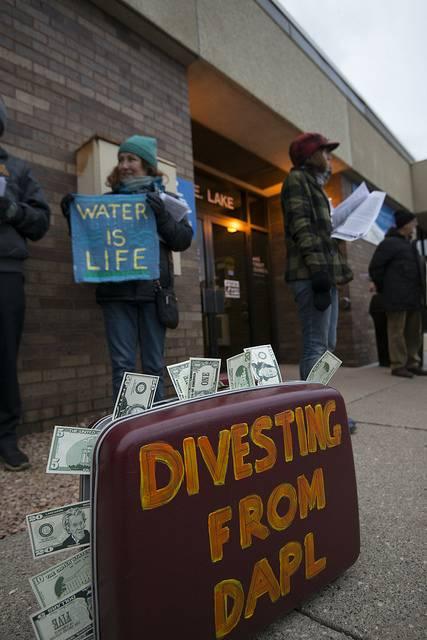

President Donald Trump’s Jan. 24 memo to the Secretary of the Army signaling the go-ahead for the Dakota Access and Keystone XL pipelines was great news for the project’s developers, Energy Transfer Partners and Trans Canada. The memorandum, like Trump’s surprise election, signaled new confidence in a declining market that is still fighting to prove its mastered environmental liabilities.
But the memo did something else, as well, something that proponents of troubled projects like DAPL and Keystone XL had a problem surpassing in past decades: It suggested a route for approval that bypassed the rigorous environmental assessment and vetting processes that are usually expected in infrastructure projects.
It did so by suggesting that oil and gas developments and their potential impact upon communities that have already been victim to oil spill controversies could be “review[ed] and approv[ed]” efficiently in what Trump calls an “expedited manner.”
This past week, the snowy fields of North Dakota became the staging grounds to a growing contingent of Native American tribes and environmental organizations (such as Earth Justice, which is assisting with legal defense), as well as U.S. veterans and other supporters determined to protest the president’s decision.
For many, their protest isn’t just a defense for clean drinking water, but for constitutional rights. Veterans who made their way to the camp this week said they weren’t there to incite or take part in violence. They came to lend recognition to human rights.
“We are prepared to put our bodies between Native elders and a privatized military force,” Air Force veteran Elizabeth Williams told the Guardian Newspaper.
“This is a humanitarian issue,” Navy veteran Matthew Crane added. “We’re not going to stand by and let anybody get hurt.”
By detouring processes that have, in the past, given executive agencies the intelligence and the footing to avoid (or at least minimize) liability in court, the administration hasn’t just increased risk for court challenges, but it’s also given fuel to the belief that with rights abridged and a recent history of violence against protesters, there is more reason to oppose and dissent than to dialogue and to propose alternatives.
More than 50 North American tribes coalesced to protest the completion of DAPL. Native tribes across the world, from Norway to Latin America, also voiced their solidarity for the effort to stop the pipeline.
And the ripple is beginning to show on more fronts than the fields of North Dakota. Earlier this month the city of Seattle announced that it would terminate its business with one of the country’s largest banks. Wells Fargo’s public standing has been mired in controversy for months over accusations of fraud. But according to the magazine Governing, it was Wells Fargo’s financial support of DAPL that inspired both Seattle and Davis, California, to sever their business with the bank.
Seattle’s announcement represents a $3 billion loss for Wells Fargo and will take effect in 2018 (although the council said the new law means the city will no longer seek new contracts with the bank effective immediately). The Davis decision will pull another estimated $124 million from Wells Fargo’s revenue and indicates that the growing call for divestment from DAPL is working.
Rainforest Action Network (RAN) pointed out that by sanctioning the go-ahead of DAPL and Keystone XL without allowing court and investigative processes like environmental assessments to conclude impartially, the government is signaling to the 17 financial institutions disbursing more some $1.4 billion (of the $2.5 billion cost of the project) that it’s okay to overlook human rights. And that’s a perilous position for a federal government and businesses to be in.
"Disbursement of this project loan is a key test of the seriousness of these banks’ commitments to human and Indigenous rights," Lindsey Allen, executive director of RAN, said in a statement. "If Citibank, Wells Fargo and the other 15 banks involved with this loan sign the final check, they will have bankrolled committed a serious violation of human rights."
And then there is the federal government’s relationship with Native American tribes that believe the DAPL decision will forfeit transparency. As Standing Rock Chairman David Archambault II explained to President Trump in a recent letter:
“The problem with the Dakota Access pipeline is not that it involves development, but rather that it was deliberately and precariously placed without proper consultation with tribal governments.“This disregard for tribal diplomatic relations and the potential for national repercussions is utterly alarming,” wrote Archambault, who said he requested meeting with the president but did not get a response.
Last week Veterans Stand, the organization of veterans aiding the Standing Rock Sioux, announced that it raised another $200,000 toward support of the Standing Rock water protectors on its GoFundMe page in less than one week. In 2016, the group raised $1.5 million, reaffirming the Standing Rock movement.
With dozens of environmental, human rights and academic organizations (as well as businesses) speaking out in support of the Standing Rock Sioux, the Trump administration may soon find that there is a reason why governmental processes seem mired in decades of convention and regulations seem hard to change. They don't just protect the environmental and human rights of communities, but they also protect the government's budget from lengthy court cases when something unexpectedly goes wrong.
Image credit: 1) Flickr/Becker1999; 2) Flickr/Fibonacci Blue
Japan's Present is America's Future
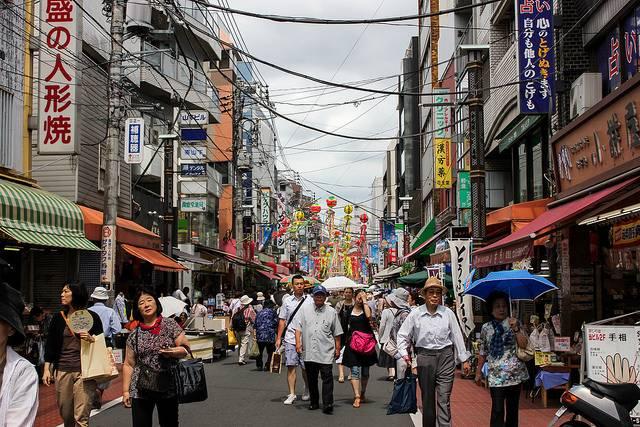

After decades of remarkable growth, the Japanese economy hit a wall in the early 1990s, literally and figuratively.
In the following decades, the country went through some remarkable changes, while seeings its economy continue to stagnate. What has happened in Japan over the past 20+ years provides an interesting case study for the United States -- and may specifically offer lessons for an administration seeking to destroy the one, crucial factor that allowed our economy to grow while Japan’s did not.
The end of career jobs
One of the main legacies of Japan’s postwar economic boom was the safety net provided by lifetime jobs at many companies. Even after such arrangements disappeared in Western countries, Japanese could expect to keep their jobs as long as they wanted them. This stability is one reason Japan’s poverty rate remained so low for so long.
Lately, though, that unique system has started to break down. The few career jobs that are left have been taken up for years by employees who got in before the economy stagnated, meaning there are fewer such openings for recent college graduates.
This is leaving many young people stuck working for minimum wage in the service sector, something with which many Americans can also relate. In fact, some youth are even protesting for a higher minimum wage. Taking a page from the Fight for $15 campaign, they hope to raise the Japanese minimum wage from 900 yen an hour to 1,500 yen (or from about $9 to $15)
“If people are working for 900 yen an hour, then even if they are working, they are poor,” Niki Harada, president of the Tokyo Youth Union, told TriplePundit. “It is [estimated] that about 20 million people are in that category – the working poor.”
Still, in many ways, Japanese have it far better than Americans. Income inequality is not as big of a problem in Japan, and CEO salary is (crazy enough) tied to how well the company performs, meaning no golden parachutes or other examples of companies going bankrupt but still giving their CEOs huge salaries. This, of course, gives little solace to the growing number of young people who can no longer make a living, but it is something.
Unfortunately, another massive social change may only increase the burden on those working poor.
Aging population
Japan is the oldest country in the world, demographically. Years of declining birthrates – now at just 1.4 births per woman, well below the accepted replacement rate of 2.2, have made Japan the first country in the world to experience a shrinking population due chiefly to more elderly people dying. The country’s population was just over 128 million in 2010. Five years later, it was just above 127 million.
The means today nearly a third of Japan is made up of people over 65. Outside the big cities of Tokyo, Osaka and Nagoya, you can find entire towns and districts filled with the elderly. Caring for them is becoming a major strain on the central government, especially as it becomes more difficult for the youth to find good jobs and take care of their families.
Sound familiar? The U.S., by comparison, has a national birthrate of 1.9 and is still many years away from a shrinking population, but the ratio of working age to elderly has been falling for several years. There are real concerns about Social Security and Medicare. And the age-gap between people living in economic powerhouses, like San Francisco and New York, compared to middle America is real.
If we don’t figure out how to expand social services, empower rural communities and provide better access to health care, we may soon be in an even worse situation than Japan.
Immigration restrictions make things worse
Of course, there is one key difference between the U.S. and Japan, and that is immigration. America is open to it, and Japan is not. In fact, nearly all of our population growth and increase in national productivity can be tied to immigration.
Japan’s immigration policy is one of the most restrictive in the world. Just 2 percent of the population are migrants, far below nearly any other developed nation. Refugees? Last year, Japan accepted just 28 of them.
America, on the other hand, has historically been open to immigrants, who play a vital role in the economy. They take on jobs that Americans can no longer do, and are also entrepreneurs and the founders of some of our most innovative companies. The most famous example may be Russian immigrant and former refugee Sergey Brin, the co-founder of Google.
In fact, data shows immigrants play a huge role in the American economy – accounting for 15 percent of GDP, and increasing year-on-year economic growth. And, by the way, there’s little or no evidence that immigration has any impact on native jobs, or wages.
Moreover, immigration is the reason our working-age population has remained relatively steady. Americans are also not having as many children, so the influx of mostly younger immigrants is helping to balance this demographic challenge. For now, that is.
Unfortunately, the Donald Trump administration seems to want to destroy this by limiting immigration. It would be, as many economists believe, an economic disaster. Just look at Japan. Since 1990, when the Japanese economy first began to stagnate, and today, the difference in GDP growth between our two countries can be almost entirely attributed to population growth – driven, in the U.S., by immigration.
Lessons
America needs to work to ensure good jobs for people of all age groups, and prepare for what happens when our population ages, otherwise we could be in line for a stagnation à la Japan. But one thing we should not do is close our borders.
Curbing immigration now would only worsen the economy, and hasten greater demographic challenges. Trump is, fittingly, meeting with Japanese Prime Minister Shinzo Abe this week. Let’s hope he learns how not to follow his example.
Photo Credit: George Alexander Ishida via Flicrk.
Ford Doubles Down On a $1 Billion Autonomous Vehicle Investment
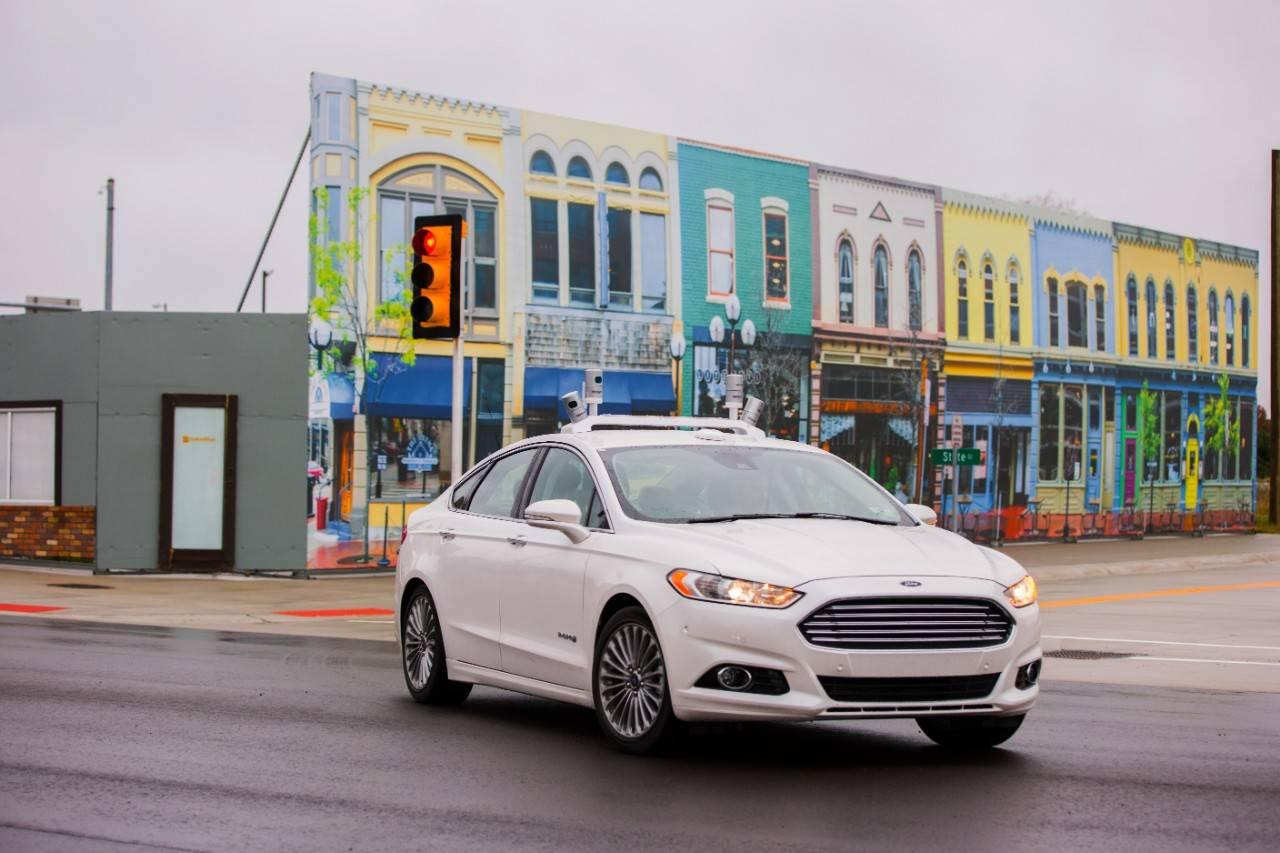

Last week Ford Motor Co. announced it will invest $1 billion in Argo AI, an artificial intelligence company based in Pittsburgh, Pennsylvania.
The financial commitment, to be spread over five years, is crucial to meet Ford’s goal to roll out a self-driving vehicle by 2021. Ford will become the majority stakeholder in Argo AI, which plans to increase hiring to 200 employees at its Pittsburgh, Silicon Valley and Detroit metropolitan area offices.
As Bloomberg reported last week, Argo AI will become a subsidiary of Ford. Under the terms of the agreement, the company will operate independently as it develops robotics and artificial-intelligence software that could eventually be licensed to other companies.
For Ford, the deal could provide the company with the "brains" for a future product line of self-driving cars.
Argo AI was founded by former Google and Uber employees to achieve what the company describes as a mission to tackle the challenges of coding, robotics and artificial intelligence that are the foundation of autonomous vehicles.
In a post on Medium, the company emphasized the social benefits of self-driving cars: the possibility of saving thousands of lives by preventing accidents due to human error; to scale personal mobility for those who cannot or do not want to purchase an automobile; and to free up space in urban areas that otherwise is used for parking.
Ford first announced its quest to develop a fully autonomous passenger car last summer. Its plans to develop a Society of Engineers (SAE) level 4-capable automobile included investments and partnerships with four startups. Those companies -- based in California, New York City and Israel -- will help Ford develop light detection and radar (LiDAR) sensors, advanced algorithms, machine vision and 3-D mapping.
The automaker is staking a claim as the industry leader in autonomous vehicle development by launching what it says are the first publicly-demonstrated driving tests in snow and at night. Ford was the first manufacturer to test its autonomous cars at the University of Michigan’s Mcity self-driving car laboratory, and plans to double the size of its Silicon Valley research center by the end of this year.
Other automakers are ramping up their efforts to become market leaders in autonomous cars, which will disrupt the consumer market to which these companies have been accustomed for over a century.
Toyota, for example, is investing $1 billion in a research institute with offices in Michigan, Silicon Valley and Cambridge, Massachusetts. The company brought on Gill Pratt, one of the world’s leading robotics researchers, while developing partnerships with top U.S. Universities.
Volkswagen has also planted itself in Silicon Valley as it builds a partnership with Stanford University. And last year, GM announced a long-term partnership with Lyft and said it would start building and testing autonomous vehicles at its Orion Township assembly plant.
Image credit: Ford Motor Co.
Will Our Political Divide Cause A Recession?
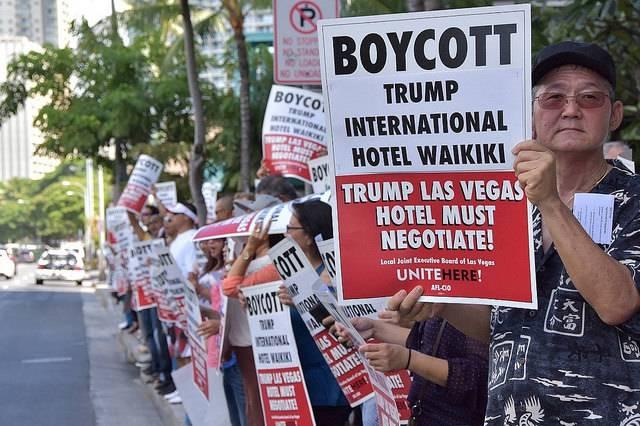

Americans' confidence in the economy is down slightly this month, according to a poll measuring consumer sentiment. Nothing serious.
But the poll’s underlying implications are more serious than a slight downturn: Consumer sentiment is divided between Republicans, who are buoyant over the recent election, and Democrats who are angry and fearful.
This is potentially troubling for our economy because the counties that voted Democrat in Election 2016 account for two-thirds of our nation’s annual gross domestic product (GDP). What happens if Democratic consumers, or our country's invaluable immigrant entrepreneurs, turn bearish? Could this trigger a recession?
A nation divided economically
Our country is not only divided on our politics. We are also divided by our economic productivity.
America’s oil patch offers a telling example. The falling price of oil sent six out of America’s top eight oil states into an economic recession. California and Texas are the two that avoided this fate. California’s economy is booming from its global tech leadership. And Texas’s diversified economy, including its spot as our nation’s largest wind power producer, enabled it to barely avoid recession.
This economic divide goes a long ways toward explaining our political divide. Coal country voted overwhelming for Republicans. Silicon Valley voted overwhelmingly for Democrats.
The threat to our economy is if this political divide begins to show up in business decisions and consumer purchases.
The disruptive impacts created by the demise of the Industrial Age
The end of the Industrial Age is at the core of our economic and political divide. The Industrial Age is ending as its technologies, fuels, and business models lose on price to the future tech of artificial intelligence, the Internet of Things, renewable energy and batteries.
Coal is a telling example. Utility-scale solar now produces electricity at a lower cost per kilowatt-hour than coal-fired power plants. Price-competitive batteries and net zero energy buildings are future tech's next wave. They will crush coal power plant economics. Political efforts to protect price competitiveness by dismantling environmental regulations like the Stream Protection Rule may indeed lower the cost of coal. But this will not save coal from solar, batteries and smart buildings slashing the consumer demand for coal-fired power plants.
The smart factory is the terminal threat to the Industrial Age and its manual laborers (in the U.S. and around the world). FoxConn, the China-based iPhone manufacturer, is a prime example. The company just laid off 60,000 Chinese factory workers by replacing them with robots.
What has been lost in politics is that America is a smart factory manufacturing leader. Our smarter factories are producing twice as much as we manufactured in 1984 while using a third fewer workers. This trend will accelerate as smart machines become smarter and more interconnected.
What if consumers and businesses use politics to make economic decisions?
The recent consumer sentiment report hints at a potential economic future where consumer and business behavior reflect our political divide. The implications are threatening to our economy and jobs.
For example, half of America’s startup businesses valued at over $1 billion were founded by immigrants. Our economy would be materially damaged if these entrepreneurs went to China, India, the Middle East, Canada, Latin America or Europe to realize their potential. And our economy would be materially damaged if potential immigrants no longer saw America as a country receptive to their business dreams and technology innovations.
And if the consumers who account for two thirds of our country’s GDP begin to express their political frustrations at the cash register, the economy could suffer even more. Grab Your Wallet is an online spreadsheet that lists stores carrying Trump-branded products and companies that advertise on sites closely aligned with President Donald Trump. Grab Your Wallet calls for consumers to boycott these products and companies. Is this the reason behind the report that first daughter Ivanka Trump’s clothing line has seen a 26 percent decline in January sales?
What if this activism spreads and consumers begin making economic decisions based on politics? Imagine Southern Republicans not buying iPhones and Silicon Valley consumers boycotting BMWs built in South Carolina. Our national economy would suffer, and Americans would lose their jobs.
Will America’s political divide cause a recession?
As an economist, I am worried. America united has created the world’s largest economy. Our free markets, with bumps and bruises along the way, have created the world’s most successful entrepreneurs and companies. No country has been able to innovate with the speed and success of America.
What could kill this golden goose?
It could be us voting with our wallets to reflect our political divide.
Image credit: Flickr/Culinary Union
Sweden Embraces Climate Leadership, Vows to Eliminate Greenhouse Gas Emissions by 2045


President Donald Trump may be poised to pull the U.S. out of the global climate agreement reached at COP21, but Sweden is charging ahead with its plan to transition toward a zero-carbon economy. This month its government announced that it would phase out all greenhouse gas emissions by 2045.
“Our target is to be an entirely fossil-fuel-free welfare state,” Climate Minister Isabella Lovin told Reuters in an interview earlier this month.
Surrounded by all women, Lovin signed the law during a photo opportunity many assumed was designed to troll Trump and his public signings of executive orders – while surrounded entirely by white men.
The law is expected to take effect in 2018. It would require the domestic transport sector to decrease its emissions by 70 percent by 2030. Domestic emissions are to be slashed by 85 percent, with the government setting new climate goals every four years. Any remaining emissions would be negated by investing in sustainable development projects abroad or planting trees to sequester carbon within the country.
Sweden’s latest move on climate change is another step taken in what the country’s government says has been a long legacy of environmental awareness and policy. The Nordic country of 9.6 million takes credit for what it calls the world’s first environmental protection agency, founded in 1967. The country’s wealth (depending on the source, it is near the top 10 of countries by per capita income) has allowed Sweden to finance its own climate fund, which has sponsored sustainable development projects from Armenia to Zambia.
The term “culture of innovation” is overused. But that phrase is more than appropriate in the case of Sweden. As Lovin explained in a recent speech, the country that birthed technologies from Skype to Spotify is also trying to foster technologies that could change the world in the coming decades. The government aggressively seeks out entrepreneurs in the clean-technology sector and supports various initiatives in order to advance next-generation technologies.
The results are all over the map. For example, the country has long pushed the development of dimethyl ether, a gas byproduct of biomass such as pulp and paper production that is often touted as a cleaner source of truck fuel.
Other transportation initiatives include what the country describes as the world’s first “electric road,” a 1.2-mile strip on which electric trucks run on conductive technology. Those same trucks can disconnect from the overhead wires and haul goods on other roads – or temporarily lower their rooftop power connectors when they need to pass a slow-moving vehicle on the electric road.
Sweden has aimed high on the environmental front, with the risk that the country could fall short of its goals unless it backs up its initiatives with investments. To that end, the Organization for Economic Co-Operation and Development (OECD) has warned that the country needs to ensure that citizens share this economic and policy “burden.” But at the same time, the OECD lauded the country for being a global “front-runner” in environmental stewardship.
Image credit: Sweden Green Party/Flickr
Dead Brand Walking: How Ivanka Trump Set The Table For Underperformance
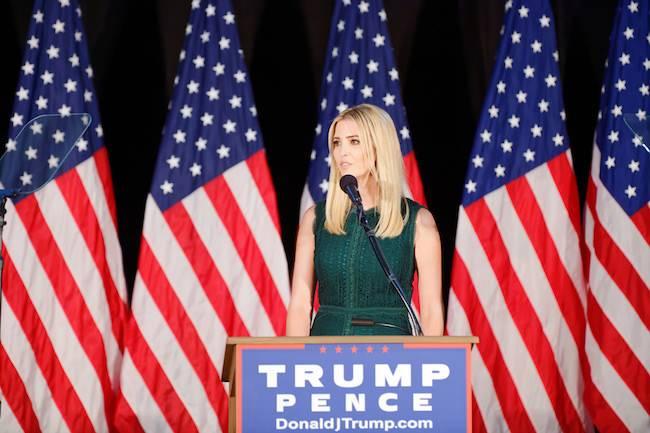

The Intertubes are ablaze with Trump news, though not all of it centers around the latest antics of the President. Much of the big buzz is over Trump's daughter, Ivanka, who saw her eponymous fashion line targeted for boycott when last year's campaign season began heating up. The situation grew from bad to worse after Election Day and in the latest development, top retailer Nordstrom let slip that it would no longer carry the Ivanka line.
Nordstrom cited underperformance, and it is just the latest in a growing number of retailers that dropped Ivanka for the same reason. The question is: Was the boycott effective, or has the Ivanka line simply lost touch with its customers?
Vogue hints at looming Ivanka Trump disaster
For an answer, it's instructive to look back at a long-form profile of Ivanka Trump that appeared in Vogue magazine almost exactly two years ago, on Feb. 15, 2015.
In typical puff-piece style, the article is padded with gushy asides about the ability of then 33-year-old Ivanka to meld motherhood, matrimonial romance, religious affiliation and business savvy into one powerful brand aimed straight at the millennial market:
". . . It’s less than two weeks into 2015, and while most of us are still coming out of a holiday fog, Ivanka has already launched a thousand ships," the article reads.
The Vogue piece emphasizes that Ms. Trump launched her brand with successful millennial women in mind. Specifically, that would be fashion-forward careerists who can pull off edgier, pricier looks than those dictated by the working woman's triumvirate of Anne Klein, Anne Taylor and H&M.
Here's the money quote from Ms. Trump herself, as cited by Vogue:
". . . It’s so funny seeing the way our competitors think women dress," Trump told Vogue. "Me and my peers, we’re working really hard at being moms and sisters and professionals. There was a previous generation of women who rose through the ranks in an environment when work and life were highly compartmentalized. And I think now, because of technology, we’re always on. Where there used to be work life and home life, now it’s one life. And I think a lot of companies don’t recognize that."
Do read the full piece to get a vivid picture of just how high Ms. Trump was flying two years ago. For those of you on the go, here's another snippet:
"Last fall, she quietly launched ivankatrump.com, a site geared to the young professional woman — 'the everyday version of Ivanka,' as someone on her team puts it—the same woman, presumably, who is buying all those Ivanka Trump shoes at Nordstrom, at the moment her biggest retail partner.[snip]
". . . One of the reasons she decided to launch a brand in her own image is that The Apprentice made her famous: a 20-something real estate diva. As she herself points out, 'Young professionals don’t usually have pop-culture relevance.' She started getting piles of fan mail from girls who wanted to grow up to be just like her."
The higher they go, the farther they fall
Fast forward two years, and the Ivanka brand is in free-fall. The latest move from Nordstrom provoked a Twitter outburst against the department store chain from the president himself that appeared unseemly if not illegal.
If the intent was to punish Nordstrom, it failed miserably. Here's the lowdown from Bloomberg:
"Nordstrom Inc. not only withstood Wednesday’s negative tweet from President Donald Trump, but it’s also added almost $450 million of market value. The department-store chain is on pace for its biggest two-day gain since early December. The shares quickly recovered from a brief slump immediately after Trump slammed Nordstrom on Twitter for dropping his daughter Ivanka’s brand."
Presidential advisor Kellyanne Conway was apparently tasked with defending the Ivanka brand. During a televised interview, she urged shoppers to "buy Ivanka's stuff" and now faces serious ethics charges for using her position to promote a private company.
So, what about the boycott?
Ms. Trump's troubles could be traced as far back as the summer of 2015. Just a few months after she launched Ivanka, her father embarked on a primary campaign punctuated by anti-Muslim and anti-Mexican remarks, among other divisive rhetoric.
As the campaign season heated up, activists began calling for a boycott of the Ivanka brand.
While it's tempting to credit the boycott with the failure of the label, that may not necessarily be the case. For example, Fortune magazine offers a research-based take on the impact of boycotts in general:
"As research has shown, boycotts typically do little to hurt companies’ revenues, in part because the activists are not typical consumers of their target companies’ goods . . . In addition, consumers tend to be fickle and unwilling to part from their favorite products and services to support a boycott, even when they are ideologically aligned with its goals."
On the other hand, the research cited by Fortune (from Professor Brayden King of the Kellogg School of Management at Northwestern University) makes it clear that a company that is vulnerable to begin with could experience a significant impact:
". . . Companies that have experienced a decline in public reputation are more susceptible to boycotts, and that the more media attention a boycott receives, the greater its effectiveness will be."
The Ivanka brand certainly fits that bill. Due to the closeness of the relationship -- familial, business and governmental -- between Ms. Trump and her father, she is forced to absorb the ripple effect of the negative press her father receives.
The Braydon King research also cites media attention, and in that regard the actions of Ms. Trump's father and his advisor certainly stoked the media fires. The unforced error was compounded when Nordstrom did the unexpected and issued a strong response to the Trump tweet:
"To reiterate what we've already shared when asked, we made this decision based on performance. Over the past year, and particularly in the last half of 2016, sales of the brand have steadily declined to the point where it didn't make good business sense for us to continue with the line for now . . ."
The Ivanka brand is also vulnerable to boycotts because its target customers -- executive and aspirational working women -- are deeply affected by the policies of the Trump administration. As amply demonstrated by the Women's March on Washington and many other actions before and after Election Day, the "typical consumers" of the Ivanka brand have become activists.
More troubles for Ivanka
TriplePundit has noted other issues with the Ivanka brand that also generated negative attention, leading to increased vulnerability to boycott.
One significant problem that surfaced last year was the brand's policy of not paying interns. Unpaid internships are common but not universal, and the optics were way off for a brand focused on working women.
The Ivanka brand also created a "family embarrassment" by hawking a bracelet Ms. Trump wore during a televised interview shortly after Election Day.
Regardless of whether or not the boycott has made a significant difference, the association with the Trump administration has not done the Ivanka brand any favors. Business Insider offers up an annotated list of other retailers that have dropped or curtailed their ties with Ivanka, and it seems to be growing.
So far the list includes Nordstrom, Neiman Marcus, Shoes.com, Belk, Jet, ShopStyle and Gilt.
It's worth noting that, according to Business Insider, one of those -- the Canada-based online retailer Shoes.com -- at least temporarily cited the boycott as an explanation:
"We understand and your voices have been heard," the company said in a tweet, which was later deleted. "We have removed the products from our website."Shoes.com told Fast Company that the shoes weren't selling well.
T.J. Maxx and Marshalls also recently let slip that they would no longer promote their Ivanka stock.
Image credit: by Michael Vadon via flickr.com, creative commons license.